The Morgans had just brought their new Dalmation puppy in for her first checkup. They had researched breeders carefully and had chosen this puppy after looking at three other litters. Everything seemed to be going well so far, but they did have one question about a bump in the middle of her belly that seemed to come and go. It was an umbilical hernia.
A hernia is technically any gap in a muscle that allows tissue or organs to protrude through it and possibly to become entrapped. Sometimes they are caused by traumatic tears and sometimes they are a developmental abnormality. Umbilical hernias are the most common kind of hernia we see in veterinary medicine. Although there is a popular myth out there that umbilical hernias happen because the mother bites the umbilical cord off too close to the body after the puppies are born, the reality is that it is a fetal developmental flaw where the body wall in the area of the umbilical cord does not fuse together properly and a hole is present where the muscle should be joined. The skin and subcutaneous tissues are usually normal and covering the opening in the body wall, so with the exception of extreme circumstances there will not be intestines dragging on the ground. What you see is a bulge where the fatty tissue inside the abdomen pushes through the hole in the body wall and pooches out under the skin--an “outie” belly button. Often if you poke at the lump the contents will squish back into the abdomen, but they will keep popping back out until the defect is repaired, offering hours of amusement to pet owners everywhere. The holes can be as small as a few millimeters and as big as several centimeters. Umbilical hernias rarely cause health concerns unless the animal has the extraordinary bad luck to have one that is just wide enough for a loop of intestine to get folded into and then trapped. Things go downhill very quickly in that situation, and emergency surgery becomes necessary to save a life. In almost all other cases umbilical hernias can be completely ignored without worrying about bad consequences in the future. They are very easy to fix, however, and many people opt to have them surgically closed at the time their pet is spayed or neutered.
Another common type of congenital hernia is an inguinal hernia, or a weak spot in the muscles in the groin area that allow abdominal organs to protrude through. Sometimes the protruding tissue is just fat, but I have seen entire bladders and intestines also get pushed through inguinal hernias. These types of hernias have much more potential to cause problems, so surgical repair at the time of spaying or neutering is highly recommended if there is not an active problem, and repair should be done immediately if the hernia is causing a problem.
The Morgans had been considering breeding their puppy, so they wanted to know if the umbilical hernia is a genetic defect that would disqualify her as a good breeding candidate. There is definitely a genetic component to the development of umbilical hernias in puppies, but the exact factors for transmission are not clearly understood. This puppy would be somewhat more likely to produce litters with umbilical hernias than a dog without a hernia, but on the scale of genetic flaws umbilical hernias rank fairly low compared to automatic disqualifiers like hip and elbow dysplasia, retained testicles, and bad jaw alignment . If this dog were an otherwise excellent example of her breed I would not suggest the presence of an umbilical hernia be the deciding factor in whether she should be bred or not.

